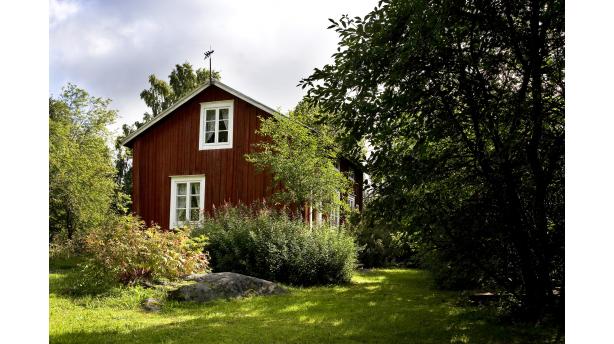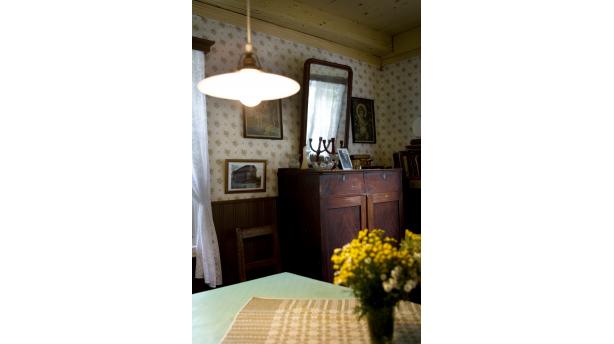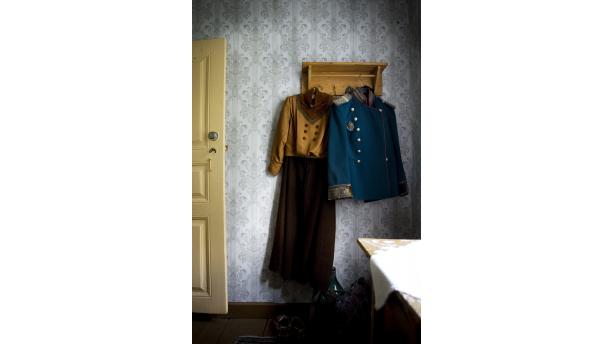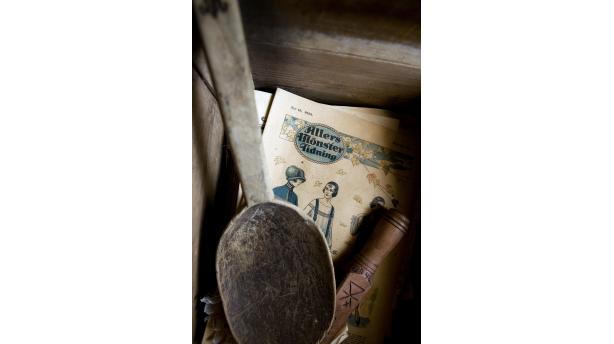Museum A-Ö » Rural life and craft » Hanna’s Cottage
Hanna’s Cottage




Did you know...
The laundresses made their own caustic soda from ash and water. Birch and oak ash were considered the best.
In Hanna’s Cottage you can learn about the history of the laundresses of Västervik and about the local history of Gerby-Västervik. Hanna was an “American widow”, who supported herself by working as a laundress for the villa-owners of Västervik. In addition to the museum you can also get acquainted with Västervik and Gerby by strolling on the various trails. In the “Walking in the Village” guide can be found five hiking paths, where you can see parts of the old residential areas.
Hanna’s Cottage was built in 1897-1898. The cottage was named after the heiress Johanna Gädda. Johanna’s parents, Karl-Johan Carlsson-Ehn and Johanna Abrahamintytär Lithén from Singsby had a house in the same courtyard. The cave and the stone foundations of the house as well as parts of the stone fence can still be seen. Hanna married Alfred Gädda from Söderudden and their wedding picture still decorates the wall of the cottage. Hanna’s husband and son, however, moved to America. Hanna became an “American widow” and was forced to make her own living, therefore she became a laundress, as many other women in Västervik, too.During that period it was unusual, that women were able to support themselves in the country. In Västervik both the city and the villa settlements were nearby, and women made contacts with the merchants living in the villas of the archipelago, who needed help with their laundry. Working in the villas also became a gateway for employment in the cities during the winter months. The soft water in the pond of the village was one of the reasons, why there were many laundresses especially in Västervik. According to tradition there were around eight laundry rooms in the area.
Hanna spent the last two years of her life bedridden and died in 1937. After the war the cottage was inhabited by some Karelians and after that it was deserted for a long while. After the death of Hanna’s son Anselmi the Gerby-Västervik society took over the house and rented the property. The cottage was renovated and nowadays it functions as the museum of the society. The cottage has been restored with old furniture and fabrics. In the collection can also be found a 1950s scout group costume from Västervik, a Russian soldier’s uniform coat likely to have belonged to a medic, and a party dress from the estate of Storm dating back to early 20th century.
The lot was high and located on a beautiful spot, and the well in the courtyard was one of the best in its time. A barn displaying fishing equipment has been moved to the yard. Fishing was namely an important secondary occupation in the region.



